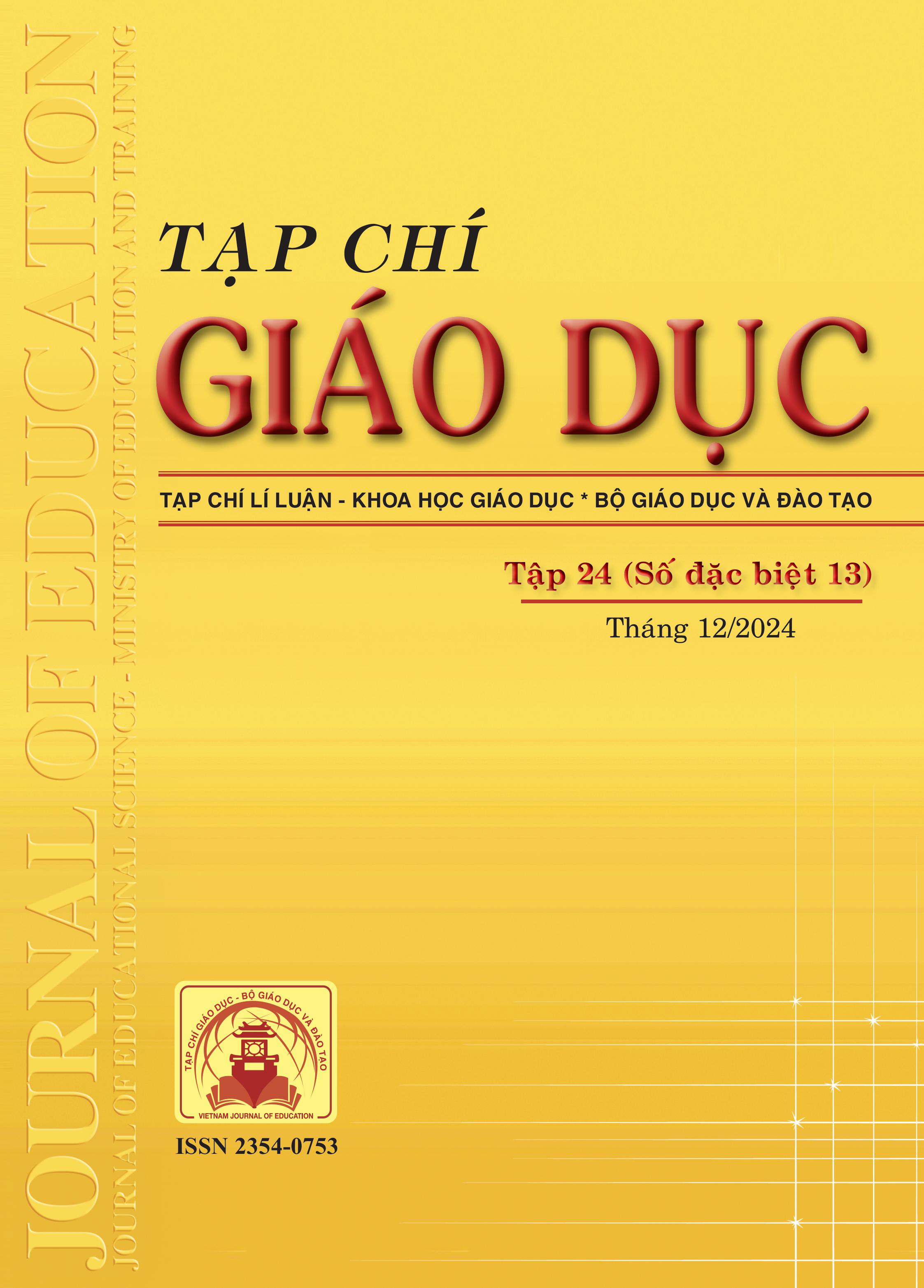Dạy học nội dung “Tính chất chia hết của một tổng” (Toán 6) theo bối cảnh REACT nhằm phát triển năng lực giải quyết vấn đề toán học cho học sinh
Tóm tắt
Contextual learning is a teaching approach that helps learners find the meaning of learning by connecting subjects with the context of daily life; thereby, they achieve the goals of scientific knowledge, skills, and form and develop learning competence and personality. One of the basic characteristics of contextual learning is to determine the context appropriate to the teaching content and the interests of the learners. Research on applying the REACT contextual learning method to teaching the content “Divisibility of a sum” (Math 6) to develop students' ability to solve mathematical problems. Applying contextual learning in teaching Mathematics not only creates opportunities for students to develop learning competence, including the competence to solve mathematical problems, but also develops their qualities, meeting the requirements of the 2018 General Education Program.
Tài liệu tham khảo
Bennett, J., & Holman, J. (2003). Context-Based Approaches to the Teaching of Chemistry: What are They and What Are Their Effects? In book: Chemical Education: Towards Research-based Practice (pp. 165-184).
Berns, R. G., & Erickson, P. M. (2001). Contextual Teaching and Learning: Preparing Students for the New Economy. The Highlight Zone: Research @ Work.
Bộ GD-ĐT (2018). Chương trình giáo dục phổ thông môn Toán (ban hành kèm theo Thông tư số 32/2018/TT-BGDĐT ngày 26/12/2018 của Bộ trưởng Bộ GD-ĐT).
CORD (1999). Teaching Mathematics Contextually. CORD Communications, Inc, USA.
Johnson, E. B. (2002). Contextual teaching and learning: what it is and why it’s here to stay. Thousand Oaks, California: A Sage Publications Company.
Kevin, W. C., Wilson, E., Flowers, J. L., & Farin, C. E. (2013). Scientific Basis vs. Contextualized Teaching and Learning: The Effect on the Achievement of Postsecondary Students. Journal of Agricultural Education, 53(1), 57-66.
Lê Thị Hồng Đào, Đặng Minh Trung, Phạm Sỹ Nam (2023). Thiết kế tình huống dạy học hệ phương trình bậc nhất hai ẩn ở lớp 9 theo bối cảnh thực tiễn. Tạp chí Thiết bị giáo dục, số đặc biệt 2 tháng 6, 24-30.
Nguyễn Ngọc Hà, Nguyễn Văn Thái Bình (2020). Phát triển năng lực giải quyết vấn đề toán học trong dạy học giải phương trình bằng phương pháp vectơ ở trường trung học phổ thông. Tạp chí Giáo dục, số đặc biệt kì 1 tháng 5, 98-104.
Nguyễn Thị Mai Thủy (2021). Tiếp cận dạy học Toán theo bối cảnh với phương án REACT và hỗ trợ quá trình mô hình hóa toán học. Tạp chí Khoa học Đại học Huế: Khoa học Xã hội và Nhân văn, 130(6A), 193-214.
Rajkumar, R., & Hema, G. (2019). Factors Affecting Mathematical Problem Solving Competence of Undergaduate Students in Facing Competitive Examinations. IMPACT: International Journal of Research in Humanities, Arts and Literature, 7(2).
Rohati (2011). Pengembangan Bahan Ajar materi Bangun Ruang Dengan Menggunakan Strategi Relating, Experiencing, Applying, Cooperating, Transferring (REACT) di Sekolah Menengah Pertama. Jurnal Edumatika, 01(02).
Trần Vui (2017). Từ các lí thuyết học đến thực hành trong giáo dục toán. NXB Đại học Huế.
Võ Xuân Mai, Tô Quốc Lộc (2023). Phát triển năng lực giải quyết vấn đề toán học cho học sinh lớp 10 qua dạy học giải bài tập phương trình quy về phương trình bậc hai 2. Tạp chí Khoa học, Trường Đại học Đồng Tháp, 12(6), 3-11.
Whitelegg, E., & Parry, M . (1999). Real-life contexts for learning physics: Meanings, issues and practice. Physics Education, 34(2), 68-73.
Wu, M. L. (2003). The application of item response theory to measure problem-solving proficiencies. PhD thesis, Department of Learning and Educational Development, The University of Melbourne.
Đã Xuất bản
Cách trích dẫn
Số
Chuyên mục
Giấy phép

Tác phẩm này được cấp phép theo Ghi nhận tác giả của Creative Commons Giấy phép quốc tế 4.0 .












